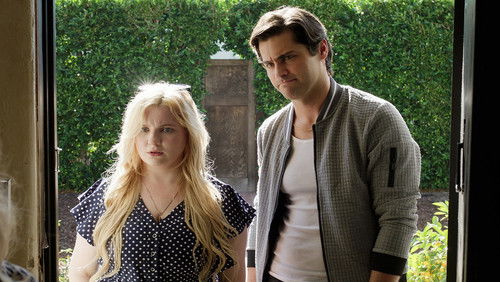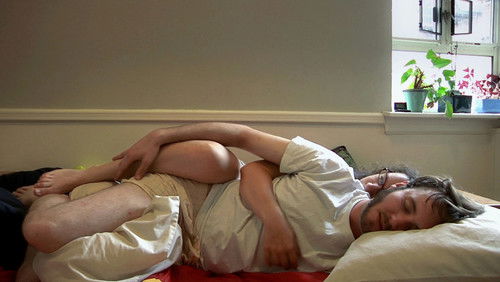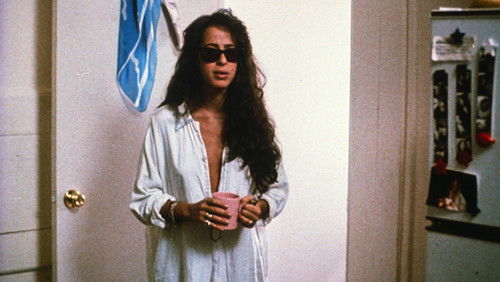Die Verworfenen schlafen gut (1960)
47KDie Verworfenen schlafen gut: Directed by Akira Kurosawa. With Toshirô Mifune, Masayuki Mori, Kyôko Kagawa, Tatsuya Mihashi. A vengeful young man marries the daughter of a corrupt industrialist in order to seek justice for his father’s suicide.
“For his first film made by his own independent production company, Kurosawa decided to take advantage of his new creative freedom to make his most politically daring picture to date. He takes on the corruption rife in corporate Japan in a film noir of almost epic proportions.u003cbr/u003eu003cbr/u003eThis was Kurosawau0026#39;s most stylised film so far. He takes a nasty, tragic film noir plot-line (and yes, there are elements of Hamlet, but not enough to call it an adaptation) but plays it at some times as if it was a farcical comedy, and at others like it was a horror. The villainous characters appear slightly ridiculous and even cartoonish. Only the most senior amongst them, Iwabuchi, is allowed to keep his dignity. While the others are just puffed-up minions, easily toppled, Iwabuchi seems truly immovable.u003cbr/u003eu003cbr/u003eThe establishing scenes are the filmu0026#39;s strongest. It opens, like The Godfather, with a lengthy wedding scene which serves to introduce all the principle characters and set the tone. Everything about the way this scene is put together tells us this is not the happy occasion it should be the hall where the ceremony takes place echoes off-puttingly, a company official about to make a speech cringes as champagne corks go off behind him like gun shots. Add to this an interruption from the police, a gang of journalists and photographers waiting in the wings, and a best manu0026#39;s speech that turns from jokes to threats, and you can practically taste the corruption and decadence that is the focus for this story.u003cbr/u003eu003cbr/u003eThe wedding scene is followed by a montage of newspaper headlines and newsreel footage, reminiscent of similar devices used by Frank Capra and Raoul Walsh. Kurosawa brilliantly choreographs this sequence to music, a rather eerie little dirge more typical of a Japanese period piece than a modern thriller. Itu0026#39;s the only example of this kind of montage I know of in Kurosawau0026#39;s work (it was rare for him to expand the narrative to the bigger picture), but itu0026#39;s a highly effective one-off.u003cbr/u003eu003cbr/u003eThe central plot, of Nishi (Toshiro Mifune) orchestrating spectacular revenge against the men who killed his father, is full of amazing set-pieces. There are echoes of Hitchcock in the way Kurosawa shoves significant objects right up to the camera. The use of music is dazzling, combining upbeat music with unnerving moments to give a great sense of irony. Nishi is the last person the villains suspect, and he often appears innocently in the background with little more significance than an extra, although of course the audience knows better. Itu0026#39;s a nice touch that Kurosawa has the character wear glasses, making Mifune almost unrecognisable to us as well.u003cbr/u003eu003cbr/u003eSadly, the filmu0026#39;s pace slows down after the first hour, and rarely gets back to the same dizzying heights for the rest of its 145 minutes. The lengthy runtime does however allow Kurosawa to add a depth that is absent from your average 100-minute Hollywood Film Noir. Kurosawa could be bleak, but he never forgot the humanity in his films, and this is really the focus in the second half of the film. He takes time to put the spotlight on the innocent victims of revenge (Nishiu0026#39;s wife, Wadau0026#39;s family), and even show the arch-villain in moments of warmth and tenderness with his family. And this is perhaps where the storyu0026#39;s biggest similarity with Hamlet is Nishiu0026#39;s revenge falls apart because he is unable to be totally ruthless and unfeeling.u003cbr/u003eu003cbr/u003eAs for the acting, Masayuki Mori is particularly good as Iwabuchi. Just look at his reaction when the second wedding cake pulls up behind him remaining calm, but clearly suppressing concern and annoyance. Kamatari Fujiwara and Akira Nishimura give great over the top performances as Wada and Shirai respectively. Unfortunately this is not one of Toshiro Mifuneu0026#39;s great performances. Mifune had an incredible range, but somehow he doesnu0026#39;t quite work as Nishi. In particular, for me he doesnu0026#39;t quite get the emoting right when he begins to realise his feelings for his wife.u003cbr/u003eu003cbr/u003eKurosawa always liked to be making some kind of point with all his films, something which sometimes got in the way of decent storytelling. The Bad Sleep Well is a political soapbox picture if ever there was one, but luckily in this case that doesnu0026#39;t water it down quality-wise. True, it is perhaps a little too long, and there are a few dull stretches, but Kurosawau0026#39;s direction was still at its peak and this stands as one of his best contemporary-set pictures.”









